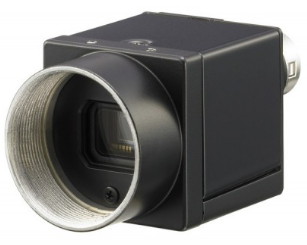

SONY XCL-C30&XCL-C30C
1/3英寸逐行扫描IT CCD,659 x 494图像传感器,130 fps帧速率,批量触发和顺序触发模式,阴影校正,缺陷校正和温度读数。
单击进入淘宝官方店购买
扫一扫
了解最新产品,获取产品参数协议
 服务热线
服务热线
0755-83995265
18922812789


1/3英寸逐行扫描IT CCD,659 x 494图像传感器,130 fps帧速率,批量触发和顺序触发模式,阴影校正,缺陷校正和温度读数。
单击进入淘宝官方店购买
In response to customer demand, Sony is proud to introduce a broad selection of new XCL CameraLink Series cameras, ranging from VGA to 5M in monochrome and color versions. With their compact size and variety of resolution options, these new cameras make it easy and affordable for customers to migrate from analog to digital.
In addition to inheriting Sony’s XCL Series camera features, such as Bulk Trigger and Sequential Trigger modes, these new cameras also incorporate some unique features including Shading Correction, Defect Correction, and Temperature Readout.
These new advanced features and benefits make XCL-C Series cameras ideal for various applications such as ITS (Intelligent Transportation Systems) and sports shooting, as well as traditional machine-vision applications.
KEY FEATURES:
With embedded shading correction, XCL-C Series cameras minimize the uneven
image intensity often caused by lighting and/or the lens. Their internal hardware
processing reduces the need for external image correction that is normally performed
via a frame grabber board and PC. This handy function reduces the processing load
of the PC, and simplifies the processing task. In addition, these cameras are
equipped with three optional lighting settings to capture clear images in varying
lighting conditions.
Defect Correction
XCL-C Series cameras can automatically minimize defective pixels (e.g., white and
black dots) within the entire imaging area directly inside the camera. This feature
helps simplify image processing.
Temperature Readout
Each camera comes with an internal temperature sensor. The host device can receive
temperature information by issuing a command. This eliminates the need for a
separate sensor, and simplifies system configuration.
Sensitivity Control
The XCL-C Series*1 is equipped with a saturation signal control function to allow the
amount of saturation signal charge on the CCD to be increased or decreased via
software commands. For example when capturing dark objects, the user can increase
the amount of saturation signal charge elevating the camera’s sensitivity to improve
the picture quality instead of using a long exposure time.*2 On the other hand, by
decreasing the amount of saturation signal charge, the amount of smear can be
reduced or improved.
*1 Excludes XCL-C130 and XCL-C130C.
*2 If the saturation signal charge amount exceeds the maximum that can
be transferred into the vertical and horizontal registers, a transfer error will
occur (e.g. smear).
Memory Channel
In addition to factory default settings, up to 16 camera parameters – including
brightness, gamma, shutter, gain, and trigger mode – can be preset to suit each
particular scene.
Bulk Trigger Mode & Sequential Trigger Mode
These new XCL-C Series cameras feature advanced Bulk Trigger and Sequential
Trigger modes in addition to a conventional trigger mode. Each camera
supports 16 memory channels that can store up to 16 different camera
setups (e.g., exposure, and gain).
Bulk Trigger mode allows these cameras to capture up to 16 images in rapid
succession using a single software or hardware trigger.
Sequential Trigger mode allows each camera to capture a single image using
successive setups stored in the memory channels with each software or hardware
trigger.
Near-infrared Sensitivity
Utilizing Sony’s EXview HAD CCD II technology enables the XCL-C280 to capture clear
images in NIR (near-infrared) wavelengths. When used with an infrared strobe, the
camera produces outstanding picture quality especially in low light
and NIR inspection applications.
Look-up Table (LUT)
Each XCL-C Series camera supports a look-up table which transforms the input
luminance signal into the required digital output. It supports factory presets – Linear,
Negative, Binarization, and Linear Interpolation – as well as a Userdefined LUT (input:
12 bits, output: 12 bits).
Trigger Noise Filtering
With a trigger line filter, these cameras can specify a valid pulse width for the trigger.
This helps avoid unexpected image capture caused, for example, by triggers
from insignificant noise.
Pulse Train Generator
XCL-C Series cameras are capable of outputting any rectangular wave from one of the
general-purpose outputs. This pulse train can be programmed for frequencies
from 0.5 Hz up to 100 KHz in 1 μs steps to control external devices such as LED lights,
simplifying overall system configuration.